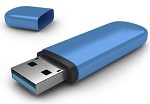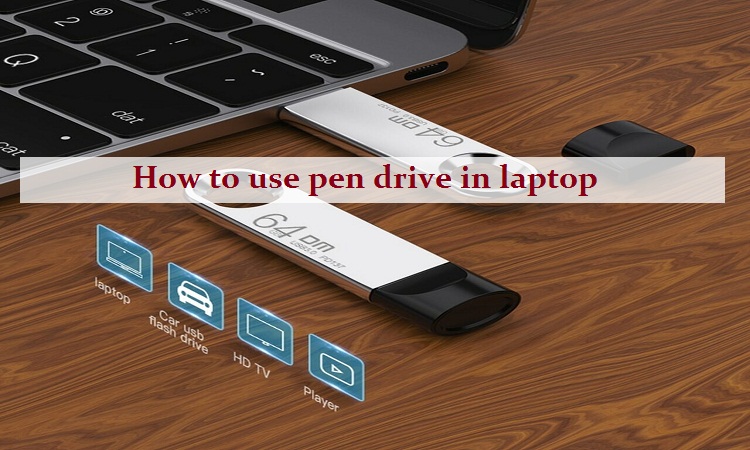While a Pen drive might sound like some kind of exotic sci-fi technology (“ready the Pen drive, captain!”), it’s actually one of the world’s most convenient and ubiquitous data storage devices. Our custom USB Pen drives are just tiny hard drives that are small enough to fit on a keychain, and once you’ve mastered how to use them, you’ll have an incredibly easy way to store and transfer files, media, and more.
Not sure how to use a Pen drive? Wondering how a Pen drive works and how you can use Pen drives for everyday file transfer and storage tasks? You might be surprised at how easy it is! Follow along with our guide to learn all about how to use these handy little storage devices.

What Is a Pen Drive, Anyway?
A USB Pen drive is a type of digital storage device designed to store files, which can be anything from text documents to multimedia files to the software. It’s a little chunk of solid state memory that you can plug directly into your device’s USB port to access the files contained on the Pen drive. That makes it useful for all kinds of applications — from installing new programs to sharing files to running an entire self-contained operating system.
Most people use USB drives with laptop or desktop computers, although it’s also possible to use them with mobile devices like tablets or even smartphones, so long as USB ports or adapters are available. Here, we’re going to look at how to use a Pen drive in one of the most common applications: copying files to or from a computer’s hard drive. How to use pen drive in laptop
How to Use a Pen Drive in 6 Steps
Time to get down to business! We’re going to show you an easy six-step process for using a USB Pen drive, including how to transfer files on or off it.
1. Find your device’s USB port.
On a laptop computer, your USB ports should be somewhere on the back or side of your machine. If you have a desktop, they’ll be located somewhere close to the CPU, which might be on the monitor (if you have an all-in-one desktop) or on the system unit (if you have a separate one).
The most common type of USB port, the USB-A port, looks like this:
2. Insert the Pen drive into the USB port.
Uncap the Pen drive or turn it to expose the USB connector. Make sure the connector is lined up correctly with the computer’s port and slide it in. If you feel resistance, don’t force it. (Lining up the USB connector can be a tougher task than you might expect, so don’t despair if you get it wrong on the first try.)
3. Open the Pen drive on your computer.
Once the drive is in the USB port, wait for your host device (the computer) to recognize it. In most cases, you’ll get a pop-up window on your desktop telling you that the computer has found a new USB device, so click the pop-up to view the device and its files. If you don’t see one, you should be able to find the device under This Mac on a Mac or This PC on a PC. At the end of this step, you should be looking at a list of files stored on the Pen drive.
4. Find the file you want and move it.
Once you’ve navigated to the file(s) you want, it’s time to move those files, either onto the drive or onto your computer. Select the files that you either want to remove from or add to the USB drive. You can either:
Use the Cut or Copy function to get the files on your clipboard and then use the Paste function to paste them where you want them, or
Left-click on the files, hold down the mouse button, and drag them into the folder where you want them.
5. Close all files and eject the drive.
Close any files that you’re accessing directly on your computer, like a document that you might have open. Then, use the Eject command to “unmount” the drive, or cut off its connection with the computer. On a PC, you’ll right-click the drive in the File Explorer window and click “Eject,” while on a Mac, you’ll click the button with the Eject symbol that’s next to the drive in the Finder window.
6. Remove the drive from your computer.
Pull the USB Flash drive connector out of your computer’s USB port, close the Pen drive, and put it away. Ta-da! That wasn’t so hard, was it?
custom shaped USB Pen drive
Looking for more tips on getting the most out of your USB Pen drives? See our top 5 most frequently asked questions about Pen drives, or browse our full selection of custom Pen drives in styles that are both fun and functional.
FAQ {Frequently Asked Questions}
Use USB storage devices
Connect a USB storage device to your Android device….
On your Android device, open Files by Google ….
At the bottom, tap Browse….
Tap the storage device you want to open. Allow….
To find files, scroll to “Storage devices” and tap your USB storage device….
Windows 10:
Plug the USB Pen drive directly into an available USB port. Note: You will see “USB Drive” in windows explorer….
Navigate to the files on your computer that you want to transfer to the USB drive….
Select the file you want to transfer….
Click and hold file to drag it to the USB drive….
Insert the Pen drive into a USB port on your computer. You should find a USB port on the front, back, or side of your computer (the location may vary depending on whether you have a desktop or a laptop). Depending on how your computer is set up, a dialog box may appear. If it does, select Open folder to view files.
Generally, a USB drive not showing up basically means the drive is disappearing from File Explorer. It might be that the drive is visible in the Disk Management tool. To verify this, go to This PC > Manage > Disk Management and check whether your USB drive shows up there.
Connect your Android phone to your PC. On your Android device, slide down the notification drawer and tap where it says “USB connected: Select to copy files to/from your computer.” On the next screen select Turn on USB storage, then tap OK.

